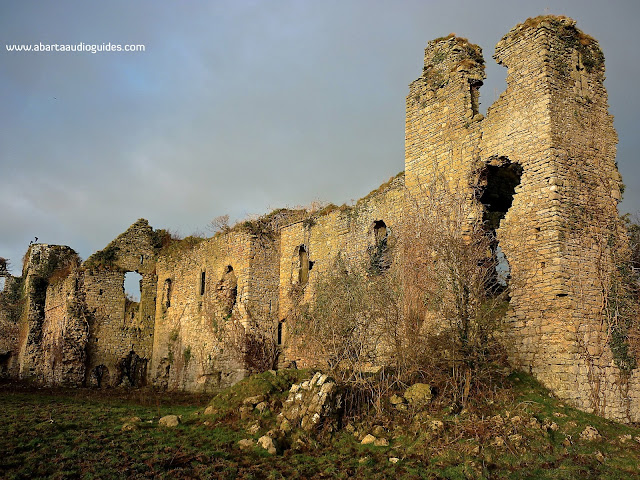This imposing fortress probably dates to the thirteenth century judging from architectural features like the trefoil-pointed windows, but Clonmore doesn’t appear in any documentary sources until the fourteenth century when it was repaired by Sir Anthony de Lucy in 1332.
In the fifteenth century Clonmore was granted to the powerful Earl of Ormonde. The castle has been attacked on a number of occasions. It was seized by the Earl of Kildare in 1516, then captured again by the Earl of Ormonde in 1598. During the Confederate Wars in Ireland during the middle part of the seventeenth century, Clonmore was captured and recaptured numerous times before finally being taken by Cromwell's army in 1650.
Clonmore was once a large square enclosure with defensive towers at each corner and a range of buildings along its eastern side. The solar block is four stories high, and the halls have two stories.
The remains of the buildings on the eastern side are a little tricky to work out when you are at the castle, as the site is in such ruinous condition, but archaeologist David Sweetman in his book ‘The Medieval Castles of Ireland’ (2005) suggests that the buildings relate to three phases in the castles history, with two rectangular halls and the southern end used as the main living quarters.
The castle is a great (if a little mucky) place to explore, with many early features like the windows, staircases and passageways. However the building is in a very ruinous state, and overgrown in places so do wear appropriate footwear and exercise caution if you visit. The castle is on a farm, please make every effort to ask permission from the landowner if you wish to enter the site (particularly if livestock are in the field).

You can’t miss the castle that is just outside of the village of Clonmore, see our map page for the exact location. In the village you will also find one of Carlow’s most important early medieval monastic sites. I’ll feature that in a forthcoming blog post.
Like exploring off the beaten track? We now have an audioguide to The Rock of Dunamase available completely free from our website www.abartaaudioguides.com. Simply download to your computer before transferring to a smartphone or mp3 to enjoy the story of this incredible and iconic site, enjoyable whether you are at Dunamase or sitting in your favourite armchair at home.











0 comments: